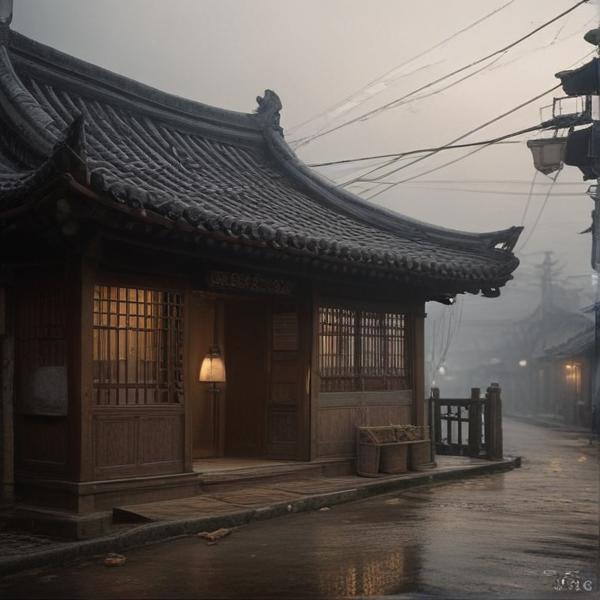基本信息 (Basic Information)
含义与用法 (Meanings & Usage)
中文核心释义 (Core Chinese Meaning): (1)记载、记录;(2)年代时期,常用于“世纪”等词;(3)纲纪、纪律。
英文核心释义 (Core English Meaning): to record; an era, a period (as in 'century'); principles or discipline (as in 'rules', 'order')
象形意义 / 为何这么写 (Pictographic Meaning / Writing Rationale)
文言文释义 (Classical Chinese Meaning)
与现代意义相近,主要有“记载”、“年代”、“纲纪”等含义。Similar to modern meaning: primarily 'to record', 'era', and 'principles or discipline'.
深入学习 (In-depth Study)
字源故事 (Origin Story)
字形演变 (Character Evolution)
常用词语和例句 (Common Words & Examples)
世纪 (century)
二十一世纪是科技飞速发展的时代。
Eng: The 21st century is an era of rapid technological development.
纪律 (discipline; rules)
学生们要遵守学校的纪律。
Eng: Students must follow the school discipline.
纪念 (to commemorate; commemoration)
我们每年都会举行活动纪念那位伟人。
Eng: We hold events every year to commemorate that great person.
相关成语 (Related Idioms)
相关成语信息待补充。Related idiom information pending.
多语言翻译 (核心释义) (Translations (Core Meaning))
- French: chronique; ère; discipline
- German: Aufzeichnung; Epoche; Disziplin
- Spanish: crónica; era; disciplina
- Italian: cronaca; era; disciplina
- Portuguese: crônica; era; disciplina
- Russian: летопись; эра; дисциплина
- Arabic: تدوين؛ عصر؛ انضباط
- Persian: ثبت؛ دوران؛ انضباط
- Dutch: kroniek; tijdperk; discipline
- Polish: kronika; era; dyscyplina
- Vietnamese: biên niên; kỷ nguyên; kỷ luật
- Ukrainian: літопис; епоха; дисципліна
视频学习资源 (Video Learning Resources)
通过以下链接在热门视频网站搜索 "纪" 的更多讲解:
Search for more explanations of "纪" on popular video sites:
- 在 Bilibili.com 搜索 "纪 字源 说文解字" (Search on Bilibili)
- 在 YouTube.com 搜索 "纪 character origin etymology" (Search on YouTube)
网络参考 (Web References for "纪") ()
网络内容摘要 (Web Content Summary):
“纪”的基本含义是“记载”、“记录”,常用于表示年代、历史事件的记录,如“纪年”(chronology)、“纪实”(record facts)。 “纪” primarily means “to record” or “chronicle,” commonly used in contexts like “纪年” (chronology) or “纪实” (recording facts).
- 文化背景与用法: 在中国传统史书中,“纪”常见于“本纪”,即对帝王事迹按年代顺序的编年记载,是史书的一种重要体裁。此外,还有“纪传体”(biographical style in historical books)和“纪事本末体”(event-centered chronological style)。 Cultural background & usage: In traditional Chinese historiography, “纪” appears in “本纪” (Annals of Emperors), an important genre recording sovereigns’ deeds in chronological order. Other related writing styles include “纪传体” (biographical style) and “纪事本末体” (event-centered style).
- 常见词语: 如“世纪”(century)、“纪念”(commemorate/commemoration)、“纪元”(era/epoch)。 Common words: Such as “世纪” (century), “纪念” (commemorate/commemoration), and “纪元” (era/epoch).
- 易混淆点: “纪”易与“记”(记忆、记录的“记”)混淆,两者都与记录相关,但“纪”更多用于书面和历史领域,而“记”常用于日常记录和记忆。 Common confusion: “纪” is easily confused with “记” (to remember/record); both relate to recording, but “纪” is more formal or historical, while “记” is for everyday memory or note-taking.
有趣事实: “纪”在成语、书名和史书体裁中均有广泛应用。 Fun fact: “纪” is widely used in idioms, titles, and genres of Chinese historical writings.
注:“纪”没有明显的象形起源,属于会意字。 Note: “纪” is an ideogram, not a pictogram.
纪的解释|纪的意思|汉典"纪"字的基本解释 - 漢典
记载:~年。~元。~行( xíng )。 。~实。~念。~传( zhuàn )体(中国传统史书的一种体裁,以人物传记为中心叙述史实,"纪"是帝王本纪," 传 "是其他人物的列传)。 ~事本末体(中国传统史书的一种体裁,以重要事件为纲,将一段历史完整地记载下来)。
纪字形演变字源_汉字「纪」_纪的甲骨文_纪的金文_金文编_甲骨文编
《四库全书》是中国古代最大的丛书,编撰于乾隆年间,由纪昀等360多位高官、学者编撰,3800多人抄写,费时十三年编成。丛书分经、史、子、集四部,故名四库。共有3500多种书,7.9万卷,3.6万册,约8亿字,基本上囊括了古代所有图书,故称"全书"。详细>>
更多图片 (纪 More Images) ()
